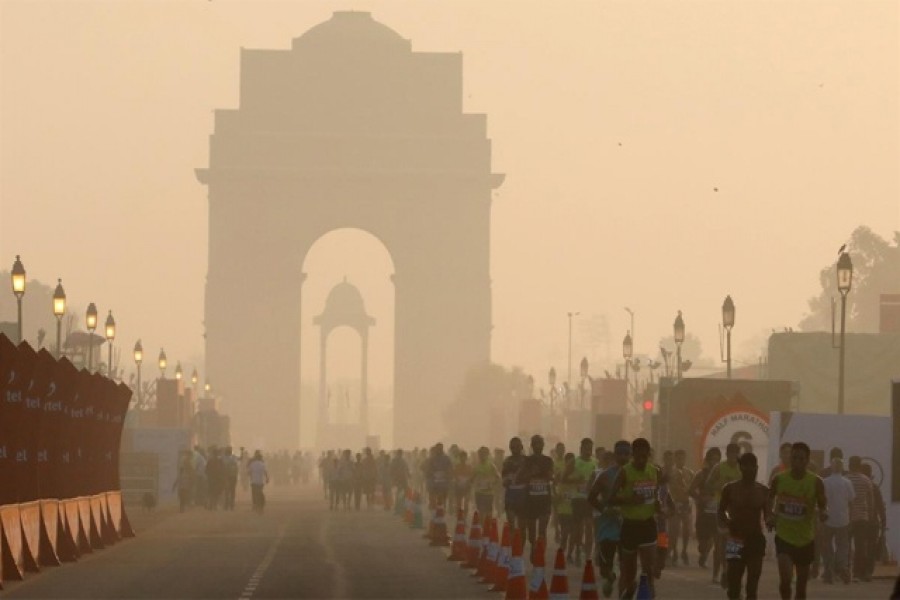Indian capital Delhi hogged for long the headline for the notorious merit of heaviest air pollution among all cities in the world. Now Bangladesh capital Dhaka - ninth largest megacity in the world - has toppled the capital of its neighbour. Quite a feat indeed! On Monday last, for most of the day and even by 9pm at night, Dhaka retained the undesirable title. The race for this ugly trophy is mostly confined to South Asian cities but on that day an unlikely contender in the shape of Mongolian capital Ulaanbaatar sneaked in to the list of top four most polluted cities. That the environment, forest and climate change minister took immediate notice of the situation is nothing surprising. But even common people could not miss the news because it is Delhi, the venue of Bangladesh T20 team's first match, where cricketers practised wearing masks, which has been beaten. It is the same Delhi where people spend money on fresh oxygen from a commercial facility.
Seriously, South Asian cities in general have been ranking as the most polluted urban concentrations in the world. A World Bank report published in 2018 finds that of all regions South Asian countries have the highest air pollution. Unsurprisingly, Bangladesh tops the list. What is most worrying is that both indoor and outdoor air is replete with fine particulate matter measuring 2.5 microgram, according to the report. No wonder, with the approach of the dry season, Dhaka is showing its vulnerability in terms of the Air Quality Index (AQI). The epithet of second or third least liveable city could have been achieved not for nothing. Leaving all other hostile issues aside, only the casualty figure from air pollution can prove how challenging life in Dhaka is.
The World Bank report claims that '18,000 lives and 578,000 years of potential life were lost in Dhaka City in 2015'. In the country the number of death was 234,000 - 10 times more than that of road accidents in that year. Its economic impact was equivalent to $6.52 billion or 3.4 per cent of the GDP in urban areas alone. The report assessed various other impacts of air pollution on life and living and all were mostly frightening. How could the policymakers sit on an issue as grave as this? Delhi grapples with fumes from burnt stalks in crop fields around that city. Here brick kilns are the worst polluters and no tangible measures could be taken so far against those.
Now there is no reason to believe that air pollution has in any way lessened over the past four years since 2015. Most likely it has become worse as was indicated by the reading on Monday last. Works on the metro rail project have seen digging up of roads like long trenches without covering them. In the late monsoon, rains did not allow the dust to dry up and be swept by the wind, and now in the dry season it is an altogether different proposition. Both short-term and long-term remedies will be required for tackling the situation. If sprinkling water on roads can be an urgent measure, dismantling brick kilns as directed by the High Court holds the key to a durable solution. An alternative to bricks (stabilised blocks) is there but it needs promotion. Most of all, the city needs massive tree plantation for its environmental health.


